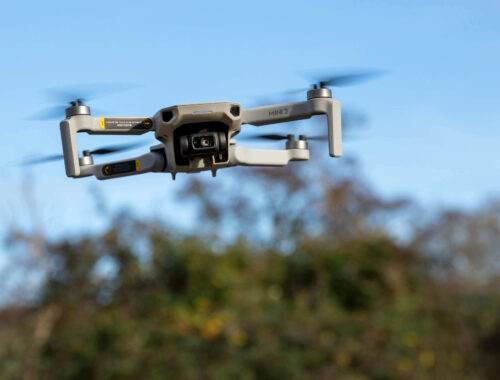
Will NFTs be the Future of Photography?
The Use of NFTs in Photography
Because the majority of images are digital or can be scanned, photographers have numerous opportunities to make money and receive credit for their work.
The photographer still has copyright and reproduction rights, which is the best part even if the client owns the copyright.
For instance, Snoop Dogg sold his collection of NFTs, “A Journey with the Dogg,” for hundreds of thousands of dollars. In addition to keeping a share of the money made when the pictures are sold, he also retains the right to license and use them on his social media accounts. Participating photographers in the NFT may profit from a large, attentive audience. Let’s first examine the problems in depth and learn what NFTs are in photography.
NFTs in Photography Are Exploding
You can open virtual galleries where anyone can view your collection. New talent has been found and introduced to a new audience by curators. The original file is not available to the NFT buyer in any copies. Although anyone can buy copies of these digital goods, NFTs are stored on blockchain so that the owner can demonstrate ownership through copyright. Simply put, NFTs are distinct images or GIFs with a slight distinction in the crypto sphere.
How Can Photos Be Sold As NFTs?
The following points outline how to sell photos as NFTs.
- You must first take your photos, or you can search your archives for the ones you believe will be the most popular.
- Decide which website you want to sell your photos on. The well-known markets are OpenSea, Nifty Gateway, SuperRare, and Foundation.
- Choose how many editions you want to sell; there is no requirement that there be just one. Theoretically, different NFTs of the same work of art could be sold separately. Though it almost lowers your list price for each NFT, it is still important to note.
- Decide on a reserve offer. You are only willing to sell your photograph NFT for that amount. Think about eBay: you probably wouldn’t want to sell a used guitar for $10! Think about the lowest price you will accept for the NFT, but don’t go too high and underbid yourself.
- Decide on a percentage royalty to estimate the amount of money you will make from your artwork.
- Sell your photo NFT to make money off of it. Your NFT certificate is created and stored in the blockchain during minting. Your artwork becomes non-fungible thanks to this process because it cannot be duplicated or copied.
Making A Platform Choice And Contacting Collectors
When it comes to locations where photographers are having success, there are a few promising signs. Let’s talk about a few markets with the promise of selling mints of photos.
Foundation
Foundation (FND) is one of the best options, and it has risen to the top because of its simple design, good discovery, and new additional collections.
Since collections have been added, photographers now have more control over how their groups are shared on other markets and how secondary royalties are produced and gathered.
OpenSea
Another choice for minting your work is OpenSea. Due to the limited search options, lack of a way to make your smart contract, and less appealing interface, it has not yet distinguished itself like Foundation and others.
Although OS transactions have a relatively low-cost structure, it is one redeeming quality. Each transaction is subject to a 2.5 percent fee from OpenSea and a 15 percent fee from the Foundation. On OpenSea, anyone can mine because it is entirely public.
SuperRare
SuperRare (SR), a debatably more elitist website, has made an effort to expand beyond its initial focus on other mediums, including photography. Because SuperRare is known for its high-caliber work, it frequently includes artists whose works command the highest prices.
Like FND, they impose a 15 percent main transaction fee and a 10 percent secondary sales royalty structure. To be listed as an artist on SR, you must submit an application that includes a one-minute submission video.
Ephemera
Another choice is Ephemera, introduced in 2020 and advertised as a platform for lens-based artists.
For purchases made on the website, Ephemera levies a transaction fee of 10% and a secondary market royalty of 10%. Due to a considerable backlog, Ephemera’s application process is currently closed.
Self-deployed
You can even install your smart contract to make the work accessible elsewhere in addition to these designated platforms and marketplaces.
This can be done by working with an intelligent contract writer or using tools like Manifold. This gives you total control over the contract’s terms and eliminates the majority of transaction fees, but it also increases complexity and the risk of not being discovered.
How Does It Work?
Our understanding of photography and its storage has changed due to the development of NFTs. Your hard copy photos are freely usable by anyone for any purpose, but you still own the rights to the image. Picture ownership has become more contentious as the world has become more digital.
If any, little to no credit was given to the original photographers or owners of the pictures. NFTs aim to resolve this problem. Since authenticity and transparency are built into the blockchain, they are ensured. Therefore, you maintain ownership and transferable rights to the image regardless of how many people adore and screenshot your photos.
A Conclusion
Finally, this blog provides insightful knowledge on the use of NFTs in photography. Photographers have established themselves in this industry, and collectors have responded with incredible enthusiasm. This may be due to the inherent humanity portrayed in the medium or the cultural value we have already assigned to it.
Collectors have responded favorably to high caliber, well-intentioned work, whether fine art, documentary, or long-form projects, giving photographers worldwide their first taste of success in this field.
Keep up with RisingMax Inc., the industry’s leading NFT marketplace development services, to learn about NFTs.
You May Also Like

The Benefits of a Drone with Camera
August 29,
The Best Carpet Cleaning Company In London
February 9,


